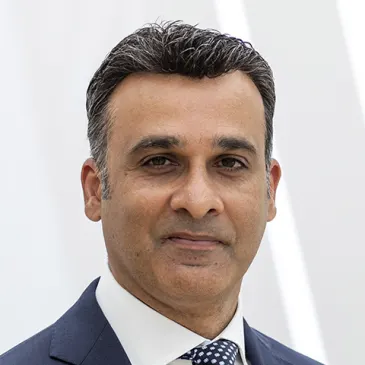This article was originally published in Law360 on September 22, 2023.
"Lead Legacy." After months of investigating, the WSJ claimed that telecommunication companies have known for decades that lead-wrapped cables—more than 2,000 in total—proliferate in their vast networks running underwater, in the soil and overhead on poles.
In July, the Wall Street Journal published an in-depth investigative series titled
Lead-sheathed cables were the industry norm from the 1880s until the 1960s, and remnants of this legacy infrastructure remain in place. However, the reporting questions whether the operators have taken proper steps to mitigate safety issues and the extent to which these cables pose a threat.
Operators responded with evidence seeking to demonstrate that the cables are not a public health risk nor a major contributor to environmental lead exposure.
Similar to historic health and environmental concerns around asbestos and lead paint, there is debate as to whether fully sealing away the hazardous materials is sufficient to eliminate risk. According to the operators, their current regulatory measures protect their workers and the communities in which the cables are embedded.
A prolonged and costly legal battle is likely to commence, with potentially severe economic ramifications for the industry. New Street Research analysts estimate it could cost $59 billion for operators to remove or remediate the cables, should that be the outcome of litigation.
On top of this, claims may be incoming from shareholders, regulators, employees and business partners around responsibilities for lead cable remediation and disclosure requirements, exacerbating the potential damages operators may face. The issue is already crushing telco stock prices.
Telco operators must wisely navigate a critical situation, wherein they resolve safety claims while rigorously managing costs.
Our experience working with companies and their counsel on similar issues from product liability, including lead paint and asbestos, to other mass tort situations—such as oil spills, wildfires, chemical explosions and Ponzi schemes—highlights the importance of effectively managing the complex, protracted claims resolution process.
Below, we lay out our seven-pronged best practices approach that has helped companies in similar situations to efficiently resolve claims and minimize damage.
1. Define population of valid claims
It will ultimately fall on the government to work through the many environmental, scientific and health-related legal issues—as well as the remediation process to determine who pays what. In late July, the U.S. Department of Justice and U.S. Environmental Protection Agency launched an investigation into the matter.
Plaintiffs will need to prove that the cables are a public health risk and/or major contributor to environmental lead exposure, such that damages are due to victims. They'll also need to prove the extent to which operators knew about potential human and environmental risks, yet didn't take action.
Beyond the above, disputes around cable ownership will factor into the valid claims process. According to a Fierce Telecom article discussing the WSJ report:
Because the lead-covered cables in question are quite old, and because of the breakup of the old Bell Telephone company, it can be difficult to determine which current company actually owns the cables in any given location. In some of the locations studied by the WSJ, telecom companies have already disavowed ownership of the cables.
Operators must work to stay ahead of this process, ensuring they're ready to assess the total number and validity of claims pursued against them. It's crucial to nail the information-gathering phase before potential litigation comes through, given the wide variety of outcomes each telco giant could face.
They can start by obtaining and evaluating all insurance policies that are relevant to the issues at hand. By understanding exposure and potential areas of recovery, operators can begin developing a comprehensive claims resolution plan.
2. Estimate the types and ranges of claim values
Claims valuation is critical to ensuring your funds are not depleted before all potential claims have been assessed, paid and discharged. You must institute a stringent claims management process to assess claims based on defined data points, thresholds and budgets.
It's important to establish appropriate projections and distribution amounts based on a variety of factors, such as forensic accounting analyses, recurring valuations of claims received and expected future claims—including direct and indirect claims, litigation, and regulatory fines.
Our experience with a client facing charges around California wildfires shows how this approach is useful. Starting with the intake process, we designed a custom claims intake form to support automated claims processing and statistical analysis.
We then set up a cloud-based portal for victims to submit claims electronically and receive payments quickly. Affected parties had a single, secure, easy-to-use location to file claims, track progress, communicate with the client and submit additional documentation as needed.
This type of portal can provide the client with a centralized view of all claims, to allow for more rapid processing. The client could also review and validate submitted claims against third-party data.
3. Integration of legal considerations
Once telco operators and plaintiffs reach a consensus on the situation, they can move forward to a resolution that best fits the interests of all parties involved.
Of course, this is easier said than done in such a complex case. Working alongside regulatory authorities and insurance providers is complicated, so it's best to set up a communications center to ensure all affected parties can transparently stay abreast of the latest updates. We will dig more into the communications process in the next section.
To manage the process of integrating legal considerations, you must:
- Investigate the issues at hand while coordinating with the proper authorities.
- Pursue contributions from insurers through litigation or alternative dispute resolution procedures.
- Establish and operate a cloud-based web portal and communications center, as well as a claimant hotline.
- Perform liability validation and resolution, using automated tools where appropriate.
- Regularly report analyses to the governance board to ensure alignment and consistency with all constituent expectations.
4. Communications
Maintaining a network of ongoing communication channels throughout the administration of the claims process and through to the final resolution is a basic requirement.
Operators in this case will need to develop public channels that include detailed statuses of investigations and claims tracking information—transparency and responsiveness at every step are imperative.
The U.S. telecom industry has launched a website
in response to the WSJ report dedicated to sharing industry updates on the issue with the public. It provides a thorough history of legacy lead-clad cables, addresses safety concerns and includes an FAQ section as well as links to additional media on the subject.
Operators must implement robust back-office communications services to provide transparency and clarity.
Hundreds, if not thousands, of parties will likely get involved in the legal progress, so implementing call center services, crafting press releases, handling FAQs, and providing claimant notices are necessary to support claims reconciliation and distribution initiatives.
5. Distribution equity
Ensuring equitable treatment of claimants, with considerations of pro-rata distributions when limited funds must cover resolution for all claims, will make the process more defensible.
When millions of parties may need to receive funds on account of their claims, you must have the appropriate accounting and banking relationships to properly administer payments.
Given the vast number of victims who may potentially seek payment as a result of the lead cables case, it's also necessary to enact a process to determine fraudulent claims from those looking to illicitly profit. You can work to mitigate the risk of fraudulent claims by:
- Conducting a detailed review of filed claims to determine whether they comply with filing rules—including fraud evaluation;
- Disputing any improper or inflated claims, and providing expert testimony when necessary; and
- Ensuring transparency throughout the claims process and through the final resolution of all claims.
In the aforementioned California wildfires case, our claims administration process and the ease with which victims could electronically submit claims allowed our client to quickly and efficiently send payments to those whose claims were valid.
There were two different wildfires for which our client faced claims; the client was able to extend an offer to claimants within 17 days on average from the claim completion date for one and within five days for the other.
Complete payment was processed within 60 days on average from the claim completion date for the first as well, and 43 days for the second.
6. Dispute resolution and insurance recovery
When designing dispute resolution procedures, provide alternative dispute resolution procedures when appropriate. This includes clear direction for the use of mediation, arbitration, appeals and the use of the appropriate court(s).
When it's time to complete a final review of claims and distribute payments, you should:
- Determine distribution amounts for each claim by category;
- Identify and quantify all sources of cash that could be used to satisfy claims, and ensure maximum value is extracted from all available assets;
- Support efforts to recover payouts from insurance carriers;
- Administrate claim payments in a legally defensible manner that results in full discharge of all liability;
- Create final reports and communicate results to the governance board, court, regulators, creditors and other interested parties; and
- File appropriate tax returns and dissolution documents.
7. Efficiency levers and technology enablers
Telco operators will likely need to host a repository for document discovery connected to claims analysis that claimants, counsel and others can easily access. Utilizing the latest technology will allow them to do so as efficiently as possible.
As an example, we found that implementing tech accelerators in our process as the claims agent and financial adviser in the 2008 Bernie Madoff Ponzi scheme allowed for the most effective recovery and redistribution of stolen assets in the aftermath.
We instituted a thorough claims management process that included setting up a fully secured, state-of-the-art online repository. This repository facilitated the intake, review and resolution of thousands of claims received from Madoff's investors looking to recoup losses.
At a claims level, the repository allowed claim reviewers to evaluate all submitted information while linking to the financial details extracted from Madoff's books and records. It also provided minute-by-minute reporting incorporating every resolution detail from each claim. Several parties, including hundreds of lawyers and government representatives, had 24/7 access.
As of August 2023, the trustee has recovered nearly 85% of the principal lost by Madoff's investors who filed claims.
Conclusion
The issues surrounding lead cables could take years to resolve. However, it is imperative for all parties involved to implement solutions now to efficiently define and evaluate potential liabilities associated with potential harm caused.



